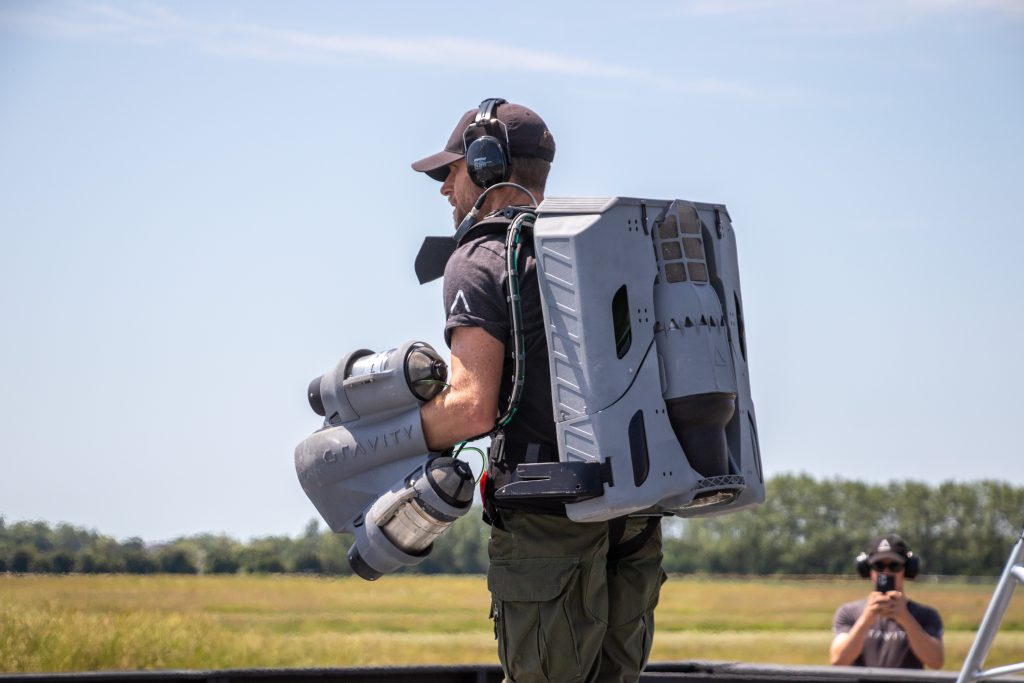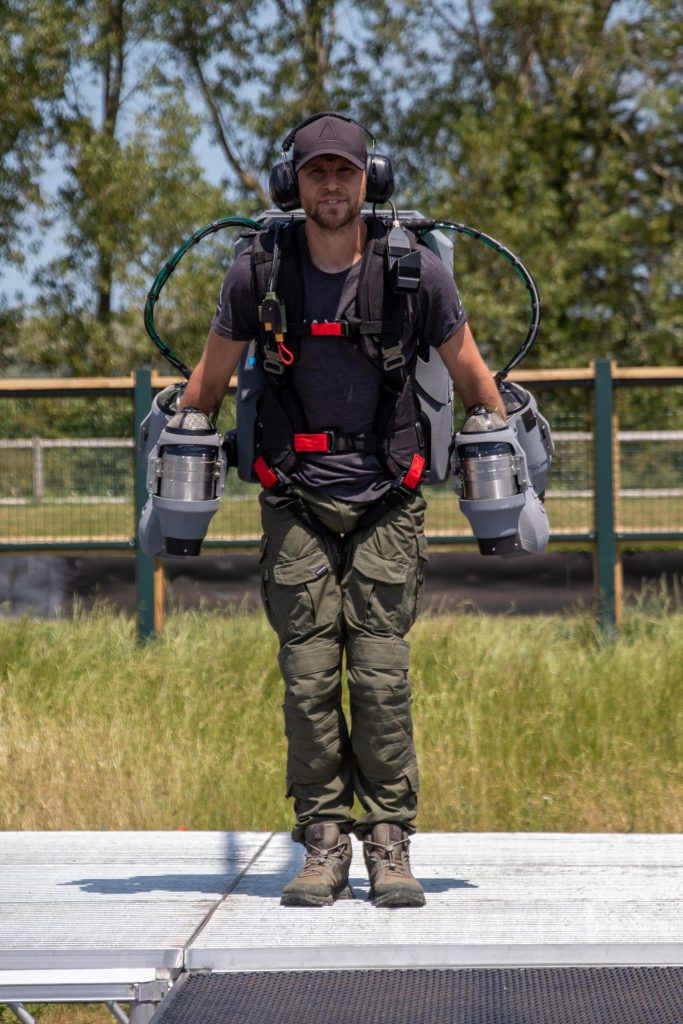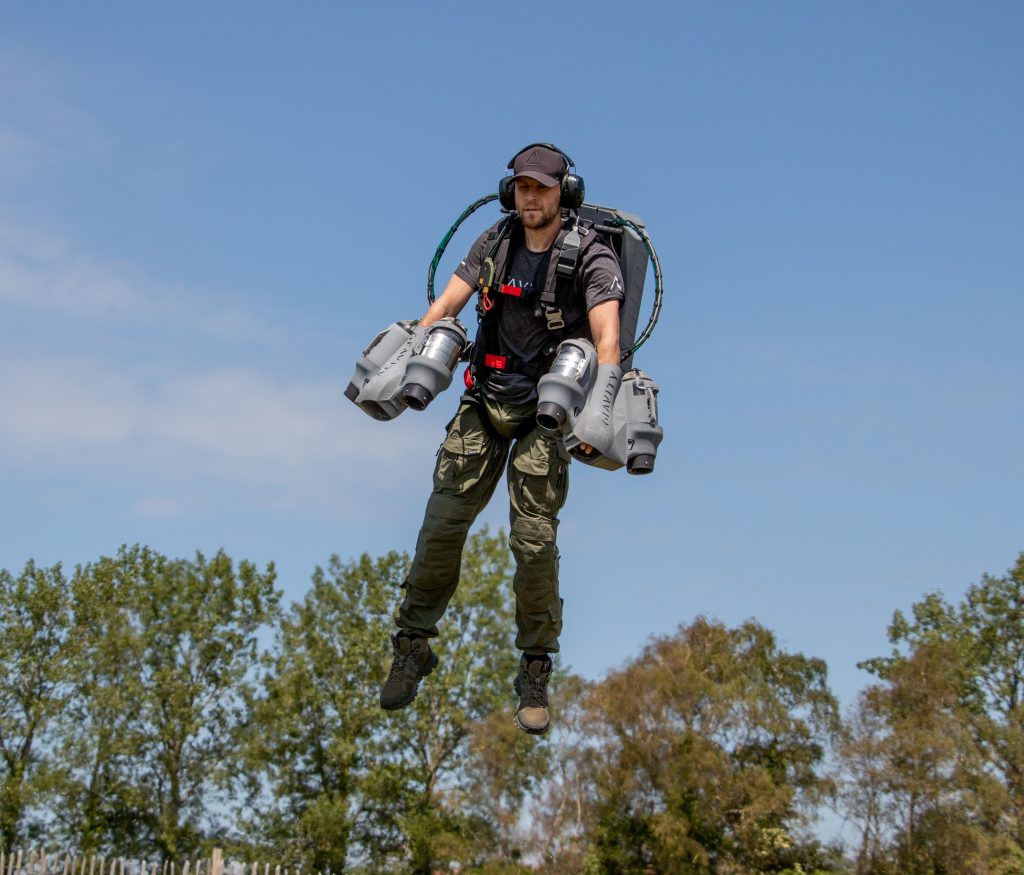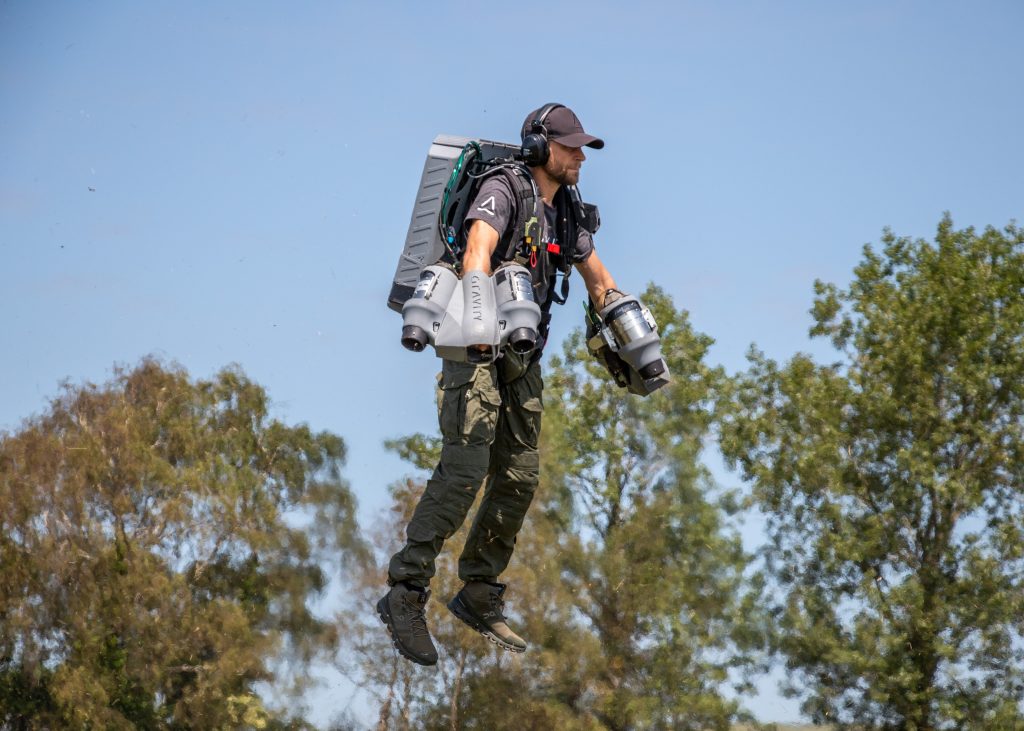Polypropylene brings dream of ‘superhuman’ flight to life for Gravity Industries
Gravity Industries have partnered with Ricoh 3D in their mission to make human flight possible, and soon the companies will once again blend creativity and innovation with the power of 3D printing and polypropylene to bring Gravity’s next ambition, the Electric Suit, to life.
Gravity Industries, a company that designs, builds, and flies Jet Suits, pioneering a new era of human flight, approached Ricoh 3D with the world’s first patented Jet Suit. The last four years have already seen Gravity take its Jet Suit from an idea on a page to over 115 public events in 33 countries, Search and Rescue trials, commercial flight training and racing on Top Gear. Due to its success, Gravity now plans to work with the Ricoh 3D team once again on their next vision, the Gravity eSuit – an electric version of the Jet Suit – which will be revealed at the 2021 Goodwood Festival of Speed.

Gravity’s decision to work with Ricoh 3D stemmed from their desire to build Jet Suits that blend mind, body, and machine, which ultimately required a material that mimicked organic matter and would enable a flight experience that was both comfortable and safe. Ricoh’s flagship material, polypropylene, ticked every box.
3D printed polypropylene is a unique material that is strong, chemically resistant, lightweight, and flexible. It enables manufacturers to prototype in the end-use material, which gave Gravity the design freedom to make human flight a reality.
Gravity’s Founder and Chief Test Pilot, Richard Browning, established the company to challenge perceived boundaries in human aviation. Richard’s journey began as an oil trader and Royal Marines Reservist, but his connection to and interest in flight is in his blood as his family have long served in the aviation space.

Richard’s passion for innovation and asking, “what if?”, led him to founding Gravity Industries to leverage cutting edge technology to reimagine human flight.
Richard said: “Our partnership with Ricoh 3D has shown that anything is possible when you blend together entrepreneurship and technological innovation. Humans are extremely robust, and that’s down to the forgiving nature of our bodies – we bend and flex, reducing the impact when we fall. That’s what polypropylene mimics.
“I’ve always had a passion for unusual challenges and venturing into the unknown, so it’s incredible to see the dream ignite into life. We’ve built up an amazing global footprint since 2017, and Ricoh has enabled us to transform an ‘impossible’ idea into something viable for production.”

The design freedom of 3D printing reduces the Suit’s part-count significantly by consolidating several assemblies into one, with far fewer components to glue and bolt than would be necessary with other manufacturing methods. Polypropylene also makes it possible to create multifunctional components, with lots of internal flow parts which move air through the Suit to keep it cool.”
Mark Dickin, who heads up Ricoh’s European 3D printing operation, said: “We’ve been on an incredible journey with Gravity Industries so far. Additive manufacturing has helped them take what might seem like an impossible idea and turn it into reality, by harnessing the unique properties of polypropylene.
“The Jet Suit is testament to the tenacity of engineering. By pushing the boundaries with both 3D printing and polypropylene, we’re showcasing what’s possible when you have the right expertise and ingenuity. 3D printed polypropylene is 90% recyclable, lightweight and flexible while still being incredibly durable– ideal for taking to the skies. Previously it would take more than two weeks to custom build the core Suit structure out of aluminium riveting and bolt together manually. Print time is now just 24 hours, taking assembly time from two weeks to two days.
“Richard and the team are pushing the boundaries of what we think humans are capable of, so we’re delighted to have played a part in the Jet Suit process. We can’t wait to continue our partnership as we look to develop components for the launch of Gravity’s eSuit.”

For Gravity’s Chief Designer, Sam Rogers, the joy of 3D printing is in being able to incrementally tweak the design between iterations, without commissioning all new mouldings and without any of the repetitive time-consuming delays of starting from scratch.
Sam added: “Ricoh are experts in additive, which has helped us produce the Jet Suits to the standard and quality that we wanted. There was no need to produce hundreds of prototypes, so the process was much simpler and enabled us to focus on what really matters – overcoming the ‘impossible’ and creating a suit that perfectly augments the human body.
“Thanks to polypropylene and it’s organic nature, people see a human who is flying when someone is in the Jet Suit. They aren’t strapped into a device or seated in a vehicle, they appear to be genuinely flying and it’s that distinction that makes all the difference.”